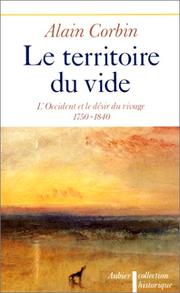| Listing 1 - 4 of 4 |
Sort by
|
Book
ISBN: 9401211868 9042039043 Year: 2014 Publisher: Amsterdam, [Netherlands] ; New York, New York : Rodopi,
Abstract | Keywords | Export | Availability | Bookmark
 Loading...
Loading...Choose an application
- Reference Manager
- EndNote
- RefWorks (Direct export to RefWorks)
The shore defies definition. The shore deconstructs and rebuilds, is the beginning or end of a journey, initiates or stops mobility. Here survivors of shipwrecks, like Robinson Crusoe, escape their death; and the weary and tired, like Max Morden, wade back into the womb of nature. The shore is transformation spatialized. Still the coast as literary setting is more than a decorative space. Its utopian/dystopian nature, its liminality and ambiguity invite transgressions of various kinds, which undermine any notion of stable and fixed borders and boundaries. The littoral is liminal, a third space that contests and deconstructs epistemic certainties. This study illustrates this paradigmatic nature of shorelines from William Shakespeare’s The Tempest to John Banville’s The Sea .
Book
ISBN: 1108917453 1108912516 1108913091 1108831494 Year: 2021 Publisher: Cambridge : Cambridge University Press,
Abstract | Keywords | Export | Availability | Bookmark
 Loading...
Loading...Choose an application
- Reference Manager
- EndNote
- RefWorks (Direct export to RefWorks)
Our current ecological crises compel us not only to understand how contemporary media shapes our conceptions of human relationships with the environment, but also to examine the historical genealogies of such perspectives. Written during the onset of the Little Ice Age in Britain, Middle English romances provide a fascinating window into the worldviews of popular vernacular literature (and its audiences) at the close of the Middle Ages. Andrew M. Richmond shows how literary conventions of romances shaped and were in turn influenced by contemporary perspectives on the natural world. These popular texts also reveal widespread concern regarding the damaging effects of human actions and climate change. The natural world was a constant presence in the writing, thoughts, and lives of the audiences and authors of medieval English romance - and these close readings reveal that our environmental concerns go back further in our history and culture than we think.
Romances, English --- Seashore in literature. --- Landscapes in literature. --- English literature --- History and criticism. --- Landscape in literature
Book
ISBN: 9781108831499 9781108917452 9781108926669 Year: 2021 Publisher: Cambridge, United Kingdom ; New York, NY : Cambridge University Press,
Abstract | Keywords | Export | Availability | Bookmark
 Loading...
Loading...Choose an application
- Reference Manager
- EndNote
- RefWorks (Direct export to RefWorks)
"In Sir Isumbras, one of the most enduringly popular late medieval romances, the penitential experience of its eponymous hero (modeled off of the evergreen St. Eustace tales) is grounded in a careful exploration of hillside ironmines and the communities of smiths that rely upon them. Such an interest in natural resource management and industrial development derives from the notable focus on charting topography that distinguishes the central third of the romance - marking Isumbras's transition from secular to divine systems of values, and his geographical movement from Christian to Saracen lands. Similarly, in the fourteenth-century Middle English version of William of Palerne (hereafter William), the eponymous protagonist flees with his lover, Melior, through a world of forests and bays that overflows with topographical details. I will also consider how sympathetic portrayals of laborers and other low-class harvesters of natural resources suggest that romances, particularly around the turn of the fifteenth century, reflect the shifting nature of their bourgeois-gentry audience by engaging with the environmental experiences of merchants, household clerks, reeves, franklins, and gentry farmers in addition to those of the higher aristocracy"-- These intricate explanations of quarry pits, hollow oaks, roadside groves, seaside caves, and war-torn estates together compose a perspective on landscape defined by networks of economic exchange. In this regard, the predominant view of the natural world presented in William ties it to earlier romances such as Havelok the Dane, a text interested in the systems of exchange that knit seaside fishermen to urban markets; and to later texts such as the Middle English versions of Partonope of Blois, which demonstrates in its depictions of estates the mercantile and agricultural uses of natural spaces that underlie the successful maintenance of a noble identity. This chapter, then, will discuss how Middle English romances' attention to the management and harvest of natural resources often reveals the link between country and urban spaces created by the exchange of such goods.
English literature --- Landscapes in literature. --- Romances, English --- Romances, English. --- Seashore in literature. --- History and criticism --- Middle English. --- History and criticism. --- 1100-1500.

ISBN: 2700722175 9782700722178 Year: 1988 Volume: vol *13 Publisher: Paris Aubier
Abstract | Keywords | Export | Availability | Bookmark
 Loading...
Loading...Choose an application
- Reference Manager
- EndNote
- RefWorks (Direct export to RefWorks)
Oceaan en beschaving --- Ocean and civilization --- Ocean et civilisation --- Romanticism --- Seashore --- Seashore in art --- Seashore in literature --- Romantisme --- Rivage --- Rivage dans l'art --- Rivage dans la littérature --- Psychological aspects --- Aspect psychologique --- Europe --- Intellectual life --- Vie intellectuelle --- Ocean --- Sea in literature. --- Port --- Sociologie de l'art --- Sociologie des loisirs --- Social aspects --- History --- Geografie --- Landschapskunde --- Algemeen. --- Civilization --- Rivage dans la littérature --- Ocean - Social aspects - Europe - History - 18th century. --- Ocean - Social aspects - Europe - History - 19th century. --- Seashore - Europe - History - 18th century. --- Seashore - Europe - History - 19th century.
| Listing 1 - 4 of 4 |
Sort by
|

 Search
Search Feedback
Feedback About
About Help
Help News
News